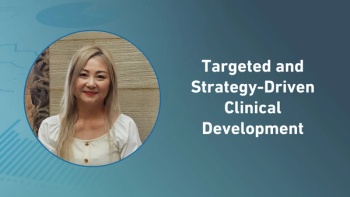
2025 DIA Annual Meeting: Why AI and Automation Are Set to Become the New Normal in Clinical Research
Peter Ronco, CEO, Emmes, shares his long-term vision for artificial intelligence in clinical research, from making automation routine to improving drug discovery, transforming regulatory oversight, reducing animal testing, and promoting ethical, equitable data use worldwide.
At the DIA Annual Meeting, Peter Ronco, CEO, Emmes, emphasized the under-recognized but impactful role of the public sector—particularly the NIH and FDA—in advancing tech-enabled clinical development. These agencies have pioneered the use of AI and large language models for tasks such as automating IND submissions, optimizing protocol design, and leveraging decades of complex data to improve trial execution and patient recruitment. Ronco also dispelled common misconceptions about AI, stressing that while it enhances efficiency, human oversight remains essential. To fully realize AI’s potential, organizations must invest in education, culture change, and talent development. Looking ahead, the vision is for AI-driven workflows to become standard practice, helping reduce animal testing, improve regulatory processes, and address health disparities, all while establishing clear ethical and privacy standards globally.
ACT: Looking ahead, what is your vision for the next frontier of AI in clinical research, and what would success look like five years from now?
Ronco: My hope is that within a couple of years, automation becomes a standard operating procedure—just the way we do business. It won’t be viewed as something novel or different; it will simply be the norm for how studies are run.
Looking beyond that, I see several key areas where AI can drive real impact. First, I hope we significantly improve the efficiency of drug discovery. There’s a lot of work happening right now around the use of AI and large language models, and I’d like to see those innovations carry through to tangible improvements across the research process.
One specific area of opportunity is reducing the reliance on animal testing. I believe we can leverage these tools to streamline that part of drug development, which is both ethically important and scientifically promising.
I also hope to see a transformation in how regulators operate—using AI proactively before submission to evaluate data packages as they’re assembled and then continuing to use it post-approval for active, real-time safety monitoring. This would allow us to maintain the most current understanding of the safety profile of drugs already on the market.
Another goal is to use AI and data science to help close health disparity gaps. There’s concern that these tools could worsen existing inequalities, but I believe, if applied thoughtfully, they can be part of the solution instead.
Finally, I hope we will have addressed the critical issues around privacy and the ethical use of data. That means establishing clear standards and frameworks that can be adopted globally, ensuing that these technologies are used responsibly and transparently across the industry.
Full Interview Summary: At the DIA Annual Meeting, Peter Ronco discussed how the public sector is quietly but effectively driving innovation in tech-enabled clinical development, often outpacing private industry in applying AI and data science. While commercial entities tend to be louder about their AI capabilities, public agencies like the NIH and FDA have led groundbreaking efforts in automating regulatory processes, leveraging large-scale longitudinal datasets, and supporting experimental applications of AI in protocol design and patient recruitment.
Specific NIH-led initiatives include the automation of IND submissions and protocol generation, as well as the use of legacy registries to identify trial participants and optimize study designs. These innovations have not only enhanced efficiency but also introduced a more scientifically rigorous approach to clinical research.
However, Ronco emphasized that several misconceptions around AI need to be addressed. One is the belief that AI can fully replace human oversight, whereas in reality, human judgment remains crucial for decision-making. Another is the assumption that AI is only useful for automating routine tasks; in fact, it also drives better protocol design and research methodology. Additionally, while some believe AI adoption will be slow, its rapid uptake may in fact be underestimated.
To integrate AI into operations, organizations must embrace a cultural shift. This includes transparent goal setting, cross-functional education on AI applications, talent development to support evolving skillsets, and a focus on measuring impact. Rather than being feared, AI should be viewed as a tool that removes tedious tasks and empowers researchers to focus on high-value work.
Looking ahead, Ronco envisions AI becoming a standard part of clinical research. Long-term goals include reducing animal testing, transforming regulatory reviews, improving post-market surveillance, addressing health disparities, and establishing global standards for ethical data use.
Newsletter
Stay current in clinical research with Applied Clinical Trials, providing expert insights, regulatory updates, and practical strategies for successful clinical trial design and execution.






.png)



.png)



.png)
.png)
